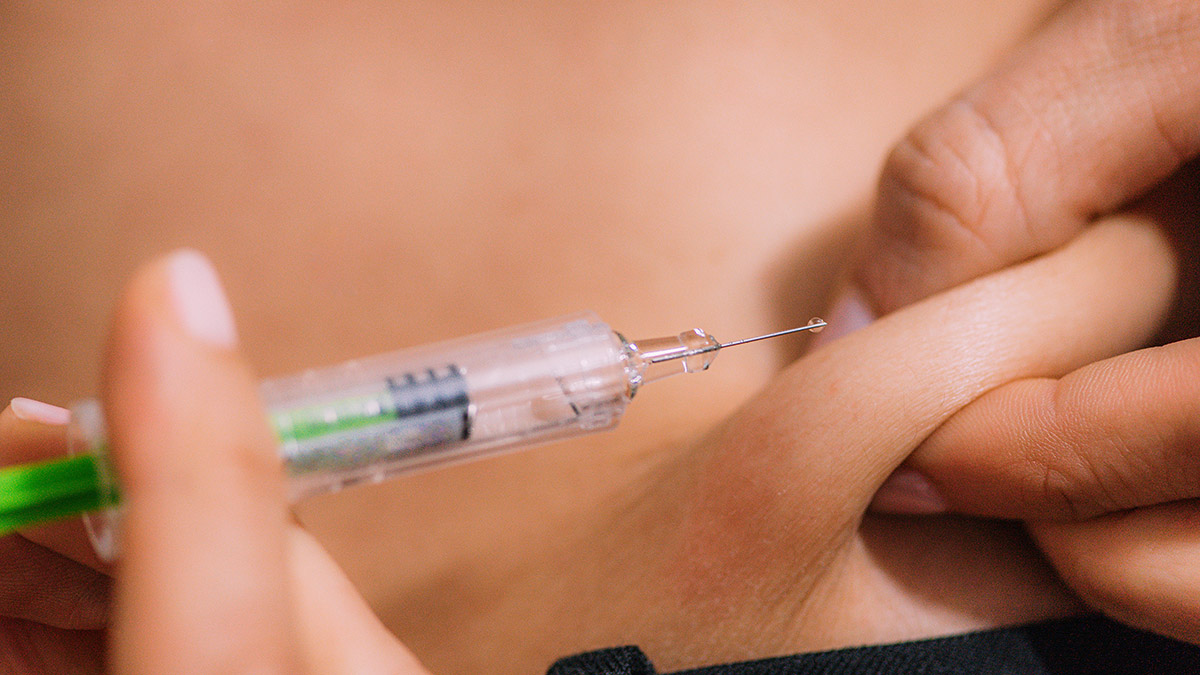Home>Finance>How Much Does Mole Removal Cost With Insurance?


Finance
How Much Does Mole Removal Cost With Insurance?
Published: November 20, 2023
Find out how much insurance covers for mole removal costs and get a clear understanding of financing options to help you manage expenses. Explore now.
(Many of the links in this article redirect to a specific reviewed product. Your purchase of these products through affiliate links helps to generate commission for LiveWell, at no extra cost. Learn more)
Table of Contents
- Introduction
- Understanding Mole Removal
- Factors Affecting Cost
- Insurance Coverage for Mole Removal
- Types of Insurance Plans
- Cost of Mole Removal with Insurance
- Copayments and Deductibles
- In-Network vs. Out-of-Network Providers
- Pre-Authorization and Referrals
- Coverage Limitations and Exclusions
- Tips for Navigating Insurance Coverage for Mole Removal
- Conclusion
Introduction
Having moles on your skin is quite common, and for most people, they are harmless and don’t require any treatment. However, there are cases where individuals may decide to have a mole removed due to various reasons, such as cosmetic concerns or potential health risks.
While the decision to remove a mole is a personal one, one of the factors that can significantly impact this decision is the cost associated with the procedure. Many people wonder how much mole removal will cost, especially if they have insurance coverage.
In this article, we will explore the cost of mole removal and how insurance can come into play. We will discuss the various factors that can affect the cost, different types of insurance plans, coverage limitations, and tips for navigating insurance coverage for mole removal.
It’s important to note that the information provided in this article is general in nature, and it’s always advisable to consult with your healthcare provider and insurance company for specific details about your coverage and costs.
So, let’s dive in and explore the intriguing world of mole removal costs and insurance coverage!
Understanding Mole Removal
Mole removal is a common dermatological procedure that involves the removal of one or more moles from the skin. Moles, also known as melanocytic nevi, are clusters of pigmented cells that can vary in shape, size, and color. While most moles are benign and pose no harm, some may become cancerous or cause discomfort due to their location or size.
There are several methods used for mole removal, including:
- Excision: This involves numbing the area with a local anesthetic and then cutting out the mole, along with a border of healthy skin. The incision is then closed with sutures.
- Shave excision: In this method, the mole is shaved off using a scalpel or a special blade. This procedure may not require sutures.
- Laser removal: This method uses laser technology to break down the mole pigment. It is often used for smaller, non-cancerous moles.
The choice of method depends on factors such as the size, location, and type of mole being removed. Your dermatologist will assess your specific situation and determine the most appropriate technique.
It’s essential to note that mole removal is typically considered an elective procedure, and insurance coverage may be dependent on various factors, including the medical necessity of the removal and the specific insurance plan you have.
Next, we will explore the factors that can affect the cost of mole removal and how insurance coverage comes into play.
Factors Affecting Cost
The cost of mole removal can vary depending on several factors. Understanding these factors can help you have a clearer idea of what to expect in terms of expenses. Here are some key factors that can affect the cost of mole removal:
1. Size and Number of Moles: The size and number of moles being removed can have a significant impact on the cost. Larger or multiple moles may require more extensive procedures, which can result in higher expenses.
2. Type of Removal Method: The method used for mole removal can also influence the cost. Excision and laser removal tend to be more expensive than shave excision. Your dermatologist will determine the most suitable method based on factors like the location and characteristics of the mole.
3. Location of the Mole: The location of the mole on your body can affect the complexity of the procedure and, subsequently, the cost. Moles in sensitive areas or hard-to-reach locations may require more specialized techniques or additional precautions.
4. Healthcare Provider and Geographic Location: The cost of mole removal can vary depending on the healthcare provider and the geographic location. Providers in urban areas or regions with higher costs of living may charge more for the procedure. It’s important to research and compare prices from different providers to make an informed decision.
5. Additional Treatments or Services: In some cases, additional treatments or services may be necessary. For example, if a mole is suspicious or shows signs of potential skin cancer, a biopsy or pathology analysis may be required, which can add to the overall cost.
6. Pre- and Post-Operative Care: The cost of mole removal may also include pre- and post-operative care, such as consultations, follow-up appointments, and any necessary dressings or medications. These additional services can contribute to the overall expenses.
It’s important to discuss these factors with your healthcare provider and inquire about the estimated cost of the procedure based on your specific situation. By understanding these factors, you can better anticipate the expenses involved in mole removal.
Insurance Coverage for Mole Removal
Insurance coverage for mole removal can vary depending on the specific insurance plan you have. While some insurance plans may cover the cost of mole removal, others may have limitations or exclusions. It’s important to understand your insurance coverage before undergoing the procedure.
Typically, if a mole poses a significant health risk or is suspected to be cancerous, insurance coverage is more likely. However, if the mole removal is purely for cosmetic reasons, insurance coverage may be limited or nonexistent.
When considering insurance coverage for mole removal, here are some essential factors to consider:
1. Type of Insurance Plans: Different types of insurance plans have varying levels of coverage for mole removal. For example:
- Health Maintenance Organization (HMO): HMO plans generally require a referral from a primary care physician and restrict coverage to in-network providers.
- Preferred Provider Organization (PPO): PPO plans offer greater flexibility in choosing healthcare providers, but costs may be higher for out-of-network providers.
- Point of Service (POS): POS plans combine elements of both HMO and PPO plans, allowing you to visit out-of-network providers with a higher out-of-pocket cost.
2. Medical Necessity: Insurance coverage for mole removal is often contingent upon medical necessity. If the removal is deemed medically necessary due to suspected cancer or other health risks, there is a greater likelihood of coverage. Cosmetic or elective mole removal may have limited or no coverage.
3. Pre-Authorization and Referrals: Insurance plans may require pre-authorization or referrals from a primary care physician before undergoing mole removal. It’s essential to check with your insurance provider to understand these requirements to avoid potential claim denials.
4. Copayments and Deductibles: Even if mole removal is covered by insurance, you may still be responsible for copayments or meeting deductible requirements. It’s essential to review your insurance plan documents to understand your financial responsibilities.
5. In-Network vs. Out-of-Network Providers: Insurance plans typically have a network of preferred providers. Going to an in-network provider may result in greater coverage and lower out-of-pocket expenses, while using an out-of-network provider may result in higher costs or reduced coverage.
It’s crucial to contact your insurance provider and carefully review your policy to understand the specifics of your coverage for mole removal. This will help you avoid any unexpected costs or denial of claims.
In the next section, we will delve into the cost of mole removal with insurance coverage.
Types of Insurance Plans
Understanding the different types of insurance plans can help you navigate the coverage options available for mole removal. Here are some common types of insurance plans and how they may impact your coverage:
1. Health Maintenance Organization (HMO): HMO plans typically offer comprehensive coverage but require you to select a primary care physician (PCP) who acts as your main point of contact for all healthcare needs. In an HMO plan, you may need a referral from your PCP to see a specialist, such as a dermatologist for mole removal. Coverage is typically limited to in-network providers, and out-of-network care may not be covered except in emergency situations.
2. Preferred Provider Organization (PPO): PPO plans offer more flexibility in choosing healthcare providers. You can see specialists, including dermatologists, without a referral, and you have the option to go to out-of-network providers. However, out-of-pocket costs may be higher for out-of-network care, and you may need to meet a deductible before the plan covers a portion of your expenses.
3. Point of Service (POS): POS plans combine elements of HMO and PPO plans. Like an HMO, you will typically need a referral from your PCP to see a specialist. However, POS plans allow you to go out-of-network for care, but at a higher cost. Depending on the plan, you may need to choose a primary care physician within the network to coordinate your care.
4. High Deductible Health Plan (HDHP) with Health Savings Account (HSA): HDHPs are insurance plans with a high deductible that you must pay out-of-pocket before the plan begins to cover your medical expenses. These plans are often paired with HSAs, which allow you to contribute pre-tax money to cover eligible medical expenses, including mole removal. It’s important to review the specific coverage details of your HDHP and HSA to understand the costs and benefits associated with mole removal.
5. Medicare and Medicaid: Medicare is a federal health insurance program for individuals aged 65 and older or those with certain disabilities, while Medicaid is a state and federal program for individuals with low income. Coverage for mole removal under Medicare or Medicaid may vary depending on factors such as medical necessity and specific program guidelines.
It’s crucial to review the terms and conditions of your insurance plan to understand the coverage and limitations for mole removal. Contacting your insurance provider or reviewing your plan documents can provide you with the necessary information to make informed decisions about your healthcare.
In the next section, we will explore the cost of mole removal with insurance coverage.
Cost of Mole Removal with Insurance
The cost of mole removal with insurance coverage can vary depending on several factors, including your specific insurance plan and the extent of coverage it provides. Here are some important points to consider:
1. In-Network vs. Out-of-Network Providers: Most insurance plans have a network of preferred providers. Visiting an in-network dermatologist will typically result in higher coverage and lower out-of-pocket expenses. However, if you choose to see an out-of-network provider, your costs may be higher, and your insurance plan may cover a lesser percentage of the expenses.
2. Copayments and Deductibles: Even with insurance coverage, you will likely have some out-of-pocket expenses for mole removal. This includes copayments, which are fixed amounts you pay at each visit, and deductibles, which are the amounts you must pay before your insurance starts covering a portion of the costs. Be sure to review your insurance plan documents to understand these costs and how they may affect your overall expenses.
3. Pre-Authorization and Referrals: Some insurance plans require pre-authorization or referrals from a primary care physician before undergoing mole removal. Failure to obtain the necessary authorizations or referrals may result in your insurance denying the claim and leaving you responsible for the full cost of the procedure.
4. Coverage Limitations and Exclusions: It’s crucial to carefully review your insurance plan documents to understand any limitations or exclusions regarding mole removal. Some plans may only cover the procedure if it’s deemed medically necessary, while others may exclude coverage for cosmetic or elective mole removal.
5. Additional Services and Pathology Analysis: Depending on the circumstances, additional services or pathology analysis may be required, which can add to the overall cost. For example, if a mole is suspicious or requires further evaluation, a biopsy or pathology analysis may be necessary. It’s important to understand if these services will be covered by your insurance plan and what portion (if any) you will be responsible for.
It’s important to note that even with insurance coverage, there may be some expenses that are not covered or only partially covered. It’s always recommended to contact your insurance provider directly or review your plan documents to get a clear understanding of the coverage and costs associated with mole removal.
In the next section, we will discuss copayments and deductibles related to mole removal with insurance.
Copayments and Deductibles
When it comes to mole removal with insurance coverage, copayments and deductibles are important factors to consider. Here’s what you need to know about these financial aspects:
Copayments: Copayments, or copays, are fixed amounts that you are required to pay at the time of the visit or service. These fees can vary depending on your insurance plan and the specific services being provided. For mole removal, you may be responsible for a copayment at your dermatologist’s office. Copayments are typically a set dollar amount, such as $20 or $30, and may differ depending on the procedures and specialists involved.
Deductibles: Deductibles are the amounts you are required to pay out-of-pocket before your insurance starts covering a portion of your medical expenses. For example, if you have a $1,000 deductible, you will need to pay $1,000 in eligible medical expenses before your insurance kicks in. Once you meet your deductible, your insurance may cover a percentage of the remaining costs. It’s important to note that deductibles can vary by insurance plan and may reset on an annual basis.
When considering mole removal, your insurance plan may require you to meet your deductible before coverage applies. Alternatively, your plan may offer copayments for specific services, such as consultations or surgical procedures. Discussing these specifics with your insurance provider is key to understanding your financial responsibilities.
It’s also important to be aware that copayments and deductibles are separate from the actual cost of mole removal. While insurance may cover a portion of the procedure, you may still have out-of-pocket expenses to pay. These costs can add up, especially if multiple moles need to be removed or additional services, such as biopsies or pathology analyses, are required.
For a clearer understanding of your copayments and deductibles related to mole removal, reviewing your insurance plan documents or contacting your insurance provider directly is highly recommended. They can provide you with the specific information regarding your coverage and how it applies to mole removal procedures.
In the next section, we will discuss the differences between in-network and out-of-network providers and how they can impact your insurance coverage for mole removal.
In-Network vs. Out-of-Network Providers
When it comes to insurance coverage for mole removal, understanding the difference between in-network and out-of-network providers is crucial. Here’s what you need to know:
In-Network Providers: In-network providers are healthcare professionals, including dermatologists, who have a contractual agreement with your insurance company. Choosing an in-network provider for mole removal usually results in higher coverage and lower out-of-pocket expenses. Insurance companies negotiate rates with in-network providers, which often leads to discounted services. Additionally, your insurance plan may have specific policies that encourage or require you to see in-network providers for full coverage.
Out-of-Network Providers: Out-of-network providers, on the other hand, do not have a contractual agreement with your insurance company. If you choose to see an out-of-network dermatologist for mole removal, your costs may be higher and your insurance may cover a lesser percentage of the expenses. In some cases, out-of-network care may not be covered at all, except in emergency situations or other exceptional circumstances defined by your insurance plan.
It’s important to note that insurance plans typically have a directory or list of in-network providers. You can usually access this information through your insurance company’s website or by calling their customer service line. It’s highly recommended to verify an in-network provider’s status before scheduling a mole removal procedure to ensure maximum coverage.
When considering insurance coverage for mole removal, it’s a good idea to research and compare prices and reviews from multiple in-network providers. This can give you an idea of the range of costs associated with the procedure and help you make an informed decision.
However, there may be instances where it is necessary to see an out-of-network dermatologist. For example, if you have limited access to in-network providers in your area or if you require specialized care not offered by in-network providers. If this is the case, it’s important to contact your insurance company to understand the out-of-network benefits and your financial responsibilities.
Ultimately, choosing an in-network provider for mole removal can help minimize your out-of-pocket expenses and maximize your insurance coverage. Understanding the specific policies and guidelines set by your insurance plan is key to making the most informed decision when selecting a provider.
In the next section, we will discuss the importance of pre-authorization and referrals when seeking insurance coverage for mole removal.
Pre-Authorization and Referrals
When it comes to insurance coverage for mole removal, pre-authorization and referrals play an important role. Here’s what you need to know about these processes:
Pre-Authorization: Many insurance plans require pre-authorization for certain procedures, including mole removal. Pre-authorization involves obtaining approval from your insurance company before undergoing the procedure. This ensures that the insurance company deems the treatment medically necessary and will provide coverage. Without pre-authorization, your insurance may deny the claim and leave you responsible for the full cost of the mole removal.
To initiate the pre-authorization process, you may need to provide your insurance company with specific information, such as a referral from your primary care physician and supporting documentation from your dermatologist. It’s important to contact your insurance company ahead of time to understand their pre-authorization requirements and to ensure you follow the necessary steps for coverage.
Referrals: Depending on your insurance plan, you may need a referral from your primary care physician to see a dermatologist for a mole removal procedure. This requirement is more common in Health Maintenance Organization (HMO) plans. A referral serves as a recommendation from your primary care physician to a specialist and helps ensure that the insurance company covers the services provided by the dermatologist.
If your insurance plan requires a referral, it’s important to speak with your primary care physician before scheduling an appointment with a dermatologist. Your primary care physician can determine if a referral is necessary and guide you through the process of obtaining one, if needed.
Both pre-authorization and referrals are essential steps in ensuring insurance coverage for mole removal. Failing to comply with these requirements may result in denied claims and unexpected out-of-pocket expenses. It’s crucial to familiarize yourself with the specific guidelines set by your insurance plan and communicate with both your insurance company and healthcare providers to ensure all necessary steps are completed.
In the next section, we will explore any coverage limitations and exclusions that may apply to insurance coverage for mole removal.
Coverage Limitations and Exclusions
When it comes to insurance coverage for mole removal, it’s important to be aware of any limitations and exclusions that may apply. Here are some common coverage limitations and exclusions to consider:
Medical Necessity: Insurance coverage for mole removal is often contingent on the medical necessity of the procedure. If a mole is suspected to be cancerous or poses a significant health risk, insurance is more likely to cover the removal. However, if the removal is purely for cosmetic reasons, insurance coverage may be limited or nonexistent.
Cosmetic and Elective Procedures: Insurance plans often exclude coverage for cosmetic or elective procedures, including mole removal that is not deemed medically necessary. If you are seeking mole removal solely for cosmetic purposes, it’s important to understand that you may be responsible for the full cost of the procedure.
Pre-Existing Conditions: Some insurance plans may have specific limitations or waiting periods for pre-existing conditions, such as existing moles. This means that certain moles or conditions that were present before obtaining the insurance coverage may not be eligible for coverage under your plan.
Annual Maximums: Insurance plans may have annual maximums or limits on the coverage provided. This means that even if mole removal is covered, there may be a cap on the amount the insurance company will pay for the procedure. It’s important to review your plan documents to understand these limits and how they may affect your coverage.
Out-of-Network Providers: As mentioned earlier, visiting an out-of-network provider may result in reduced coverage or higher out-of-pocket costs. It’s important to know if your insurance plan covers out-of-network care at all, and if so, what percentage of the expenses will be covered.
Understanding these coverage limitations and exclusions is crucial when considering insurance coverage for mole removal. It’s highly recommended to review your insurance plan documents or contact your insurance provider to get a clear understanding of these factors and how they may impact your coverage.
Keep in mind that while insurance coverage may help offset the costs, you may still have out-of-pocket expenses for copayments, deductibles, and any services that are not covered. It’s important to budget and plan accordingly to ensure you are prepared for any potential expenses associated with mole removal.
In the next section, we will provide some tips for navigating insurance coverage for mole removal.
Tips for Navigating Insurance Coverage for Mole Removal
When it comes to navigating insurance coverage for mole removal, it’s important to be proactive and well-informed. Here are some helpful tips to help you navigate the process:
1. Review Your Insurance Plan: Take the time to thoroughly review your insurance plan documents, paying close attention to coverage details, limitations, and exclusions. Familiarize yourself with the terms and conditions that apply to mole removal coverage and understand your financial responsibilities.
2. Contact Your Insurance Provider: Reach out to your insurance provider directly to clarify any questions or concerns you have regarding mole removal coverage. They can provide accurate and up-to-date information regarding your specific plan, including details about network providers, pre-authorization requirements, and any out-of-pocket costs.
3. Consult with Your Dermatologist: Schedule a consultation with a dermatologist to assess your mole and discuss your options. They can help determine if mole removal is medically necessary and provide documentation to support the procedure for insurance purposes.
4. Get Pre-Authorization: If your insurance plan requires pre-authorization for mole removal, make sure to follow the necessary steps to obtain approval before undergoing the procedure. Failure to obtain pre-authorization may result in a denied claim and leave you responsible for the full cost.
5. Choose In-Network Providers: Whenever possible, choose in-network providers for mole removal. This can help minimize your out-of-pocket expenses and maximize your coverage. Use your insurance company’s directory or website to find a list of preferred providers.
6. Understand Your Financial Responsibilities: Be aware of your copayments, deductibles, and any other financial responsibilities associated with mole removal. Budget accordingly and have a clear understanding of what you will need to pay out of pocket.
7. Keep Documentation: Keep copies of all documentation related to your mole removal, including referrals, pre-authorization forms, and billing statements. This will come in handy should you need to dispute any claims or clarify any billing issues.
8. Follow Up on Claims: After your mole removal procedure, carefully review your claims and Explanation of Benefits (EOB) statements from your insurance company. Ensure that your insurance has processed the claim correctly and that you are not being billed incorrectly or for uncovered services.
9. Advocate for Yourself: If you encounter any issues with your insurance coverage, such as claim denials or billing discrepancies, don’t hesitate to be your own advocate. Contact your insurance provider to address any concerns and, if necessary, escalate the issue to a supervisor or file an appeal.
By following these tips, you can navigate the process of insurance coverage for mole removal more effectively, ensuring you understand your coverage and financial responsibilities. Remember that each insurance plan may have different requirements and policies, so it’s important to consult with your healthcare provider and insurance company for specific guidance.
In the next section, we will wrap up our discussion on insurance coverage for mole removal.
Conclusion
Understanding insurance coverage for mole removal is essential to help manage the costs associated with the procedure. While coverage can vary depending on your specific insurance plan and the medical necessity of the removal, being informed and proactive can help you navigate the process more effectively.
Factors such as the type of insurance plan, in-network vs. out-of-network providers, copayments, deductibles, and pre-authorization requirements can all impact your coverage and out-of-pocket expenses for mole removal.
It’s important to carefully review your insurance plan documents, contact your insurance provider directly, and consult with your dermatologist to obtain the necessary pre-authorization and referrals. Choosing in-network providers and understanding your financial responsibilities can also help minimize your costs.
Remember to keep documentation of all relevant paperwork, including referrals, pre-authorization forms, and billing statements. Advocating for yourself and following up on claims can also help address any potential issues or billing discrepancies.
Ultimately, insurance coverage for mole removal depends on factors such as medical necessity, individual insurance plans, and the specific terms and conditions outlined in your policy. It’s always recommended to consult with both your healthcare provider and insurance company to understand your coverage and financial responsibilities.
By being proactive and well-informed, you can navigate the insurance process more effectively and make informed decisions about your mole removal procedure.
We hope that this article has provided you with valuable insights into insurance coverage for mole removal. If you have any further questions, it’s best to reach out to your healthcare provider and insurance company for personalized information and guidance.














